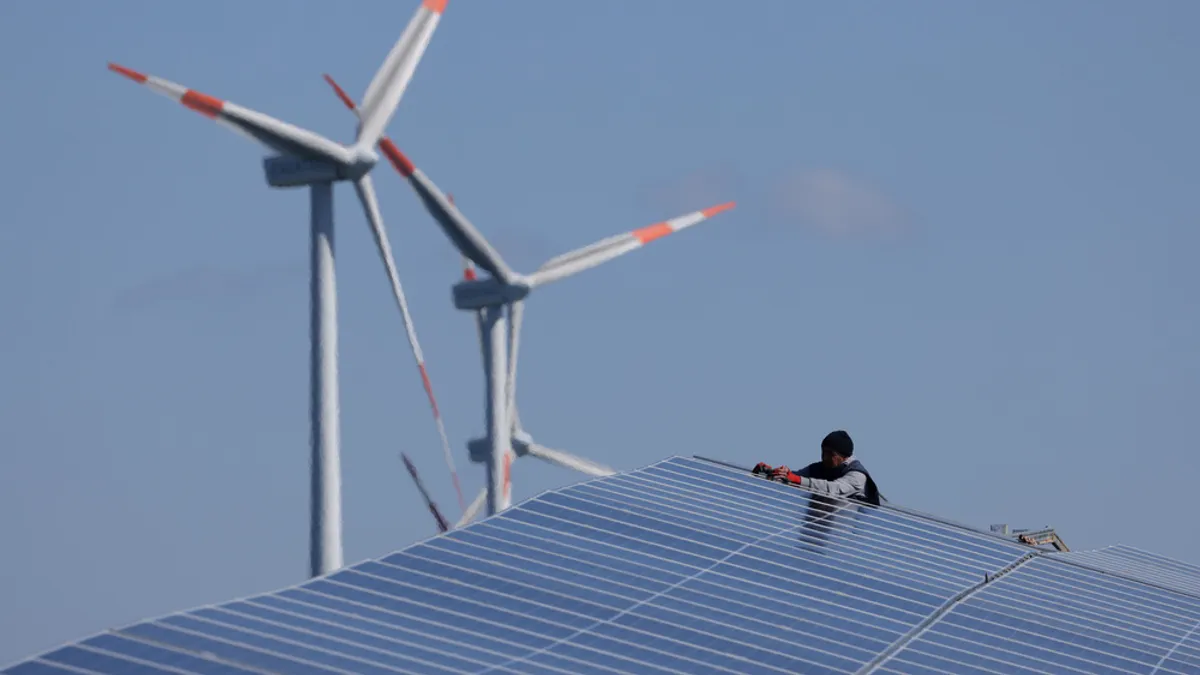Dive Brief:
- Solar investment in the U.S. fell 12% between the end of 2023 and the first half of 2024 to $26.5 billion, according to BloombergNEF's Renewable Energy Investment Tracker.
- U.S. wind projects, on the other hand, lined up $12 billion in the first half of the year, and total renewable energy investment in the U.S. is up 63% over pre-Inflation Reduction Act levels, according to BloombergNEF.
- The timing of projects — especially “megaprojects” of 1 GW or more — probably explains the difference between the two industries' fates, said Meredith Annex, head of clean power research at BloombergNEF.
Dive Insight:
Solar investment may have waned over the past year and a half, but total investment in renewable energy remains strong — it's simply moving to other subsectors of the renewable energy industry, according to BloombergNEF's Renewable Energy Investment Tracker.
Onshore and offshore wind brought in a record $31 billion toward the end of 2023, according to the tracker. While investment has cooled since that peak, wind funding for the first half of the year was still double that of the same time period last year. And geothermal companies have also seen a huge increase in interest from investors, drawing a record $8 billion in 2023, Annex said.
Overall the total amount of investment in U.S. renewable energy has remained stable since the IRA, but how that pool of capital is deployed has changed depending on the timing of each renewable sector's recovery from the supply chain challenges brought on by the Covid-19 pandemic, Annex said. Solar saw most of its rebound come in a rush in early 2023, and has since calmed down as the backlog of projects delayed by the pandemic has cleared, she said.
Wind, on the other hand, has experienced a more recent boost thanks in part to several gigawatts-scale “megaprojects” getting their permits approved in late 2023, Annex said.
Geothermal has experienced a similar dynamic thanks to a growing number of large-scale projects like Fervo Energy's deal with Google in November 2023, she said. But at least some investor enthusiasm for geothermal energy is also tied to recent advances in technology that Annex described as “potentially revolutionary.”
“If you start to achieve the cost declines seen in some U.S. projects elsewhere, you could expand to so many more places,” she said.
Although it's unlikely that any of these sectors will continue to see significant increases in investment in the months to come — at least some of the records posted in the past year is related to pent-up delayed projects that are now back on track — Annex said she doesn't believe investment in the renewable sector will slow in the months to come, either.
The coming election and the specter of new solar tariffs may create some uncertainty, but even solar seems set to weather both circumstances regardless of outcome thanks to a combination of high PPA prices and the availability of a variety of tax incentives, she said. The biggest wildcard in the mix, she said, is FERC's ongoing effort to reform interconnection processes around the country.
“The economics for a lot of these projects are great ... it's an extremely good market to invest in, and there are excited players and capital,” Annex said. “The challenge is having a project you can actually connect and operate.”













